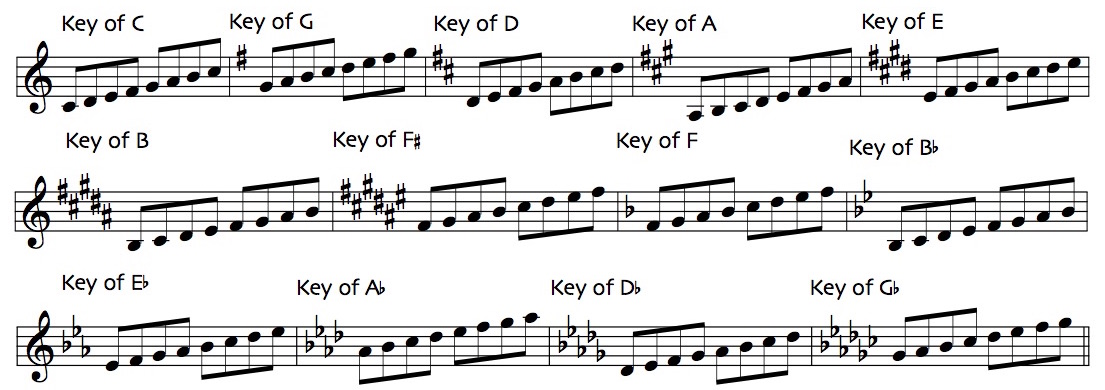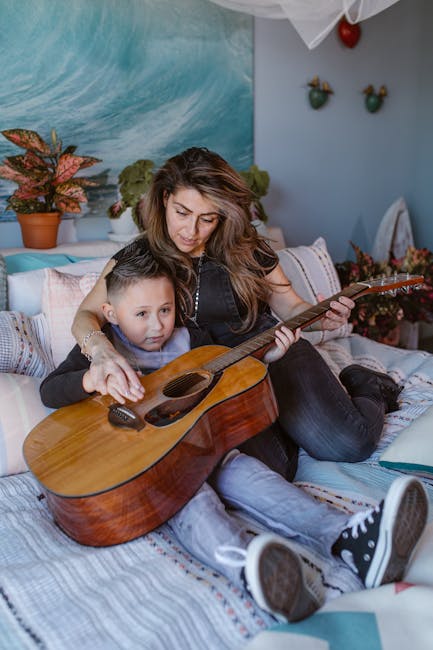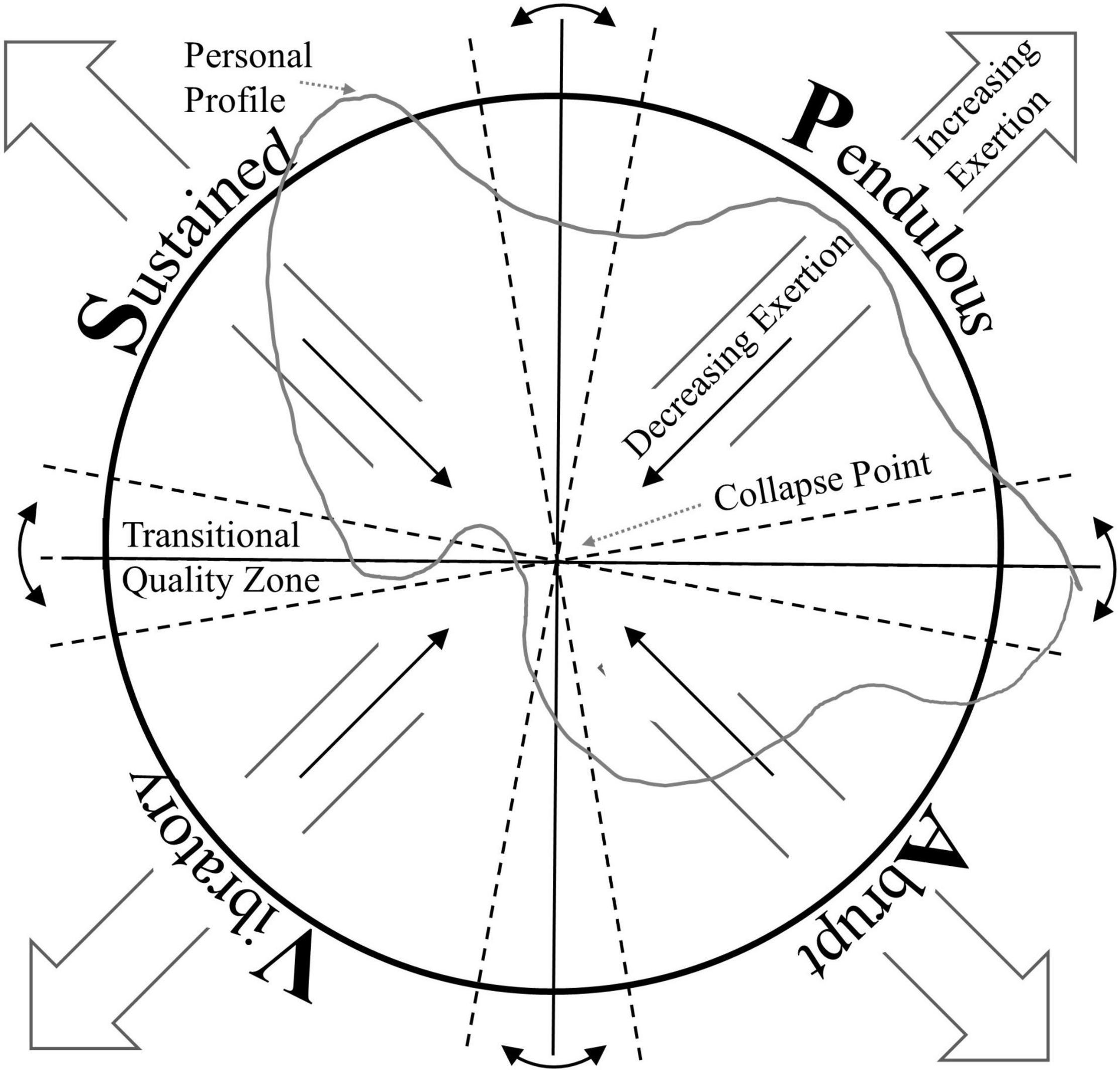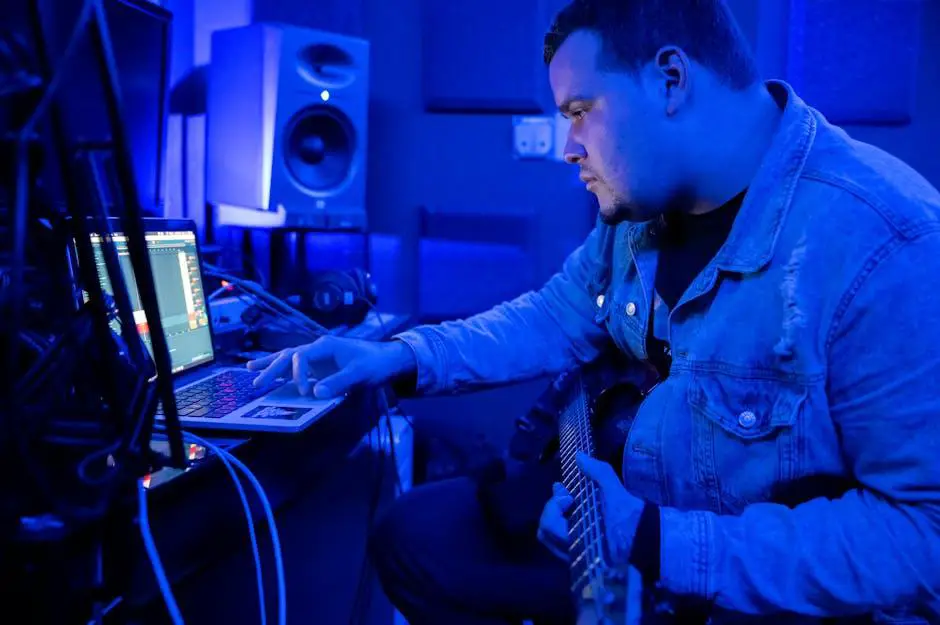Are you a beginner guitarist struggling to decipher those mysterious hieroglyphics known as guitar TABs and notation? Fear not, dear reader, for we are here to demystify the ancient art of translating those squiggly lines and numbers into music that will make your fingers dance and your heart sing. Join us on a journey through the tangled web of music notation, as we unravel the secrets of the guitar gods and unlock the power of melodic mastery. Grab your axe, tune up, and get ready to rock your way to guitar greatness!
Contents
- 1 Understanding Guitar TABs: Basics and Symbols
- 2 Exploring Standard Notation: Notes, Scales, and Rhythms
- 3 Transitioning from TABs to Standard Notation: Essential Tips
- 4 Developing Reading Skills: Strategies and Exercises for Guitarists
- 5 Mastering Rhythmic Notation: Overcoming Common Challenges
- 6 Incorporating Dynamics and Expression: Advanced Techniques in Notation
- 7 Leveraging Technology: Tools and Resources for Efficient Learning
- 8 FAQs
- 9 Rock On!
Understanding Guitar TABs: Basics and Symbols
So you’ve decided to learn how to read guitar TABs, huh? Well, buckle up because you’re in for a wild ride filled with strange symbols and confusing diagrams. But fear not, young grasshopper, for I am here to guide you through the basics of this mystical language of musicians.
First things first, let’s talk about those six lines you see in a TAB. Each line represents a string on your guitar, from the high E string at the top to the low E string at the bottom. Think of it as a musical map, showing you exactly where to place your fingers to produce sweet, sweet melodies.
Now, let’s dive into the symbols you’ll encounter in a TAB. Pay close attention, because these little guys can make or break your guitar-playing dreams:
- Numbers: These bad boys tell you which fret to press down on a particular string. The higher the number, the higher up the fretboard you go.
- X: Not to be confused with a kiss, this symbol means you should mute the string and not play it. Sorry, no love songs today.
- / and : These are called slides and bends, respectively. They add flair to your playing and make you look like a true guitar god.

Exploring Standard Notation: Notes, Scales, and Rhythms
Are you tired of feeling lost in a sea of musical symbols? Fear not, brave explorer! In this post, we will embark on a thrilling adventure through the mysterious world of standard notation.
First, let’s talk about notes. Imagine each note as a tiny little character with its own unique personality. From the high-flying soprano to the low rumbling bass, each note plays a crucial role in the symphony of life. And don’t forget about those tricky accidentals – they may be small, but they sure can pack a punch!
Next, let’s delve into the world of scales. Picture scales as a musical ladder, with each rung representing a different pitch. Whether you’re climbing up the majestic C major scale or slipping down the slippery slope of the chromatic scale, scales are the building blocks of music that will help you reach new heights.
And finally, let’s groove to the beat of rhythms. Just like a heartbeat, rhythms give music its pulse and energy. From the steady march of quarter notes to the syncopated shuffle of sixteenth notes, rhythms keep us on our toes and make sure we never miss a step. So grab your sheet music and let’s start exploring the wild and wonderful world of standard notation!

Transitioning from TABs to Standard Notation: Essential Tips
So, you’ve finally decided to make the transition from TABs to standard notation. Congratulations! You’re about to embark on a musical journey that will challenge your brain in ways you never thought possible. But never fear, we’ve got some essential tips to help you navigate this treacherous terrain.
First and foremost, remember that standard notation is like a whole new language. It’s kind of like switching from speaking English to trying to decipher Mandarin Chinese. So be patient with yourself and give yourself some grace as you stumble through those mysterious squiggly lines and dots.
One key tip to remember is that standard notation is all about timing. Those little flags and dots above the notes actually mean something (shocking, right?). So pay close attention to the rhythms and practice counting out loud to make sure you’re hitting those notes on the beat.
And finally, don’t be afraid to seek help. Whether it’s from a music teacher, a fellow musician, or even just YouTube tutorials, there are plenty of resources out there to help you make the leap from TABs to standard notation. Remember, we’re all in this together!

Developing Reading Skills: Strategies and Exercises for Guitarists
Reading music is a skill that many guitarists struggle with, but fear not! With the right strategies and exercises, you can improve your reading skills in no time. Here are some tips to get you started:
**Embrace the Basics:** Before diving into complex pieces, make sure you have a solid grasp of the fundamentals. Practice reading simple melodies and rhythms to build a strong foundation for more challenging music.
**Mix it Up:** Don’t just stick to reading guitar music. Try reading music written for other instruments to expand your musical knowledge and improve your sight-reading abilities.
**Practice, Practice, Practice:** Like any skill, reading music takes time and dedication. Set aside regular practice sessions specifically focused on improving your reading skills to see faster progress.
**Play with Others:** Reading music in a group setting can help you improve your timing and accuracy. Join a band or ensemble to practice reading music together and challenge yourself in a supportive environment.

Mastering Rhythmic Notation: Overcoming Common Challenges
So, you think you’ve got rhythm, huh? Well, mastering rhythmic notation is no walk in the park. There are plenty of challenges that can trip you up along the way. But fear not, young grasshopper. I’m here to guide you through the treacherous waters of musical notation and help you emerge victorious on the other side.
One of the most common challenges when it comes to rhythmic notation is deciphering complex time signatures. 5/4, 7/8, 11/16 – it’s enough to make your head spin! But don’t worry, with a little practice and a lot of patience, you’ll be able to tackle even the trickiest of time signatures with ease. Remember, slow and steady wins the race.
Another hurdle to overcome is understanding syncopation. Those sneaky off-beats can trip up even the most seasoned musicians. But fear not, for there is a simple trick to mastering syncopation: listen to the music. Feel the rhythm in your bones and let it guide you through the twists and turns of those tricky syncopated rhythms.
And finally, let’s not forget about rests. Those silent little notes may seem harmless, but they can throw off your entire groove if you’re not careful. Make sure to pay attention to rests and give them the respect they deserve. Remember, rests are just as important as notes – they’re the punctuation marks of music, adding structure and clarity to the rhythmic landscape.
Incorporating Dynamics and Expression: Advanced Techniques in Notation
Ready to take your notation skills to the next level? Strap in, because we’re about to dive into some seriously advanced techniques for incorporating dynamics and expression into your musical scores.
First up, let’s talk about dynamics. Sure, you know how to slap a fortissimo or pianissimo marking on a page, but we’re going to take it up a notch. How about some hairpin dynamics with crescendos and decrescendos that would make Beethoven jealous? Or maybe throw in some sforzando markings for good measure. The sky’s the limit!
Next, let’s focus on expression. It’s not just about hitting the right notes anymore – it’s about injecting feeling and emotion into every measure. Use fermatas to hold onto that final note just a little bit longer, or experiment with rubato to give your performers some room for interpretation. Remember, music is meant to be felt, not just played.
And finally, don’t be afraid to get creative with your notation. Use articulation marks like staccatos, legatos, and accents to really make your music pop. Go wild with ornaments like trills, mordents, and turns – your performers will thank you for the challenge. So go ahead, push the boundaries and let your musical imagination run wild!
Leveraging Technology: Tools and Resources for Efficient Learning
Have you ever felt like you could use a little extra help in your quest for knowledge? Well, fear not! With the wonders of modern technology at your fingertips, you can level up your learning game like never before.
First up on our list of tools is good ol’ Google. This search engine powerhouse is like a trusty sidekick, ready to provide you with answers to all of life’s burning questions. From research papers to academic articles, Google has it all. Just remember to fact-check, unless you want to find yourself quoting a random internet stranger as a credible source.
Next, let’s talk about online courses. Platforms like Coursera and Udemy offer a plethora of courses on pretty much every topic under the sun. Want to learn how to cook like a Michelin-star chef? There’s a course for that. Interested in mastering the art of underwater basket weaving? Yup, there’s a course for that too.
And let’s not forget about the magic of mobile apps. Whether you’re looking to improve your language skills with Duolingo or boost your math proficiency with Photomath, there’s an app for just about everything. So why waste time flipping through dusty old textbooks when you can learn on the go?
FAQs
What is the difference between guitar TABs and notation?
Think of TABs as the cool kid in school who doesn’t care about rules and just wants to have a good time. It’s a simpler way to show where to put your fingers on the guitar without getting bogged down in all those fancy symbols.
How do I read guitar TABs?
Reading TABs is like following a treasure map to find buried treasure, except the treasure is a killer riff. Each number on the lines represents a fret on the guitar, so just follow the numbers and let the music lead you to glory.
Is it important to also learn traditional music notation?
Traditional notation is like the wise old sage of the music world, full of wisdom and mystery. While TABs are great for getting started, learning traditional notation will unlock a whole new level of music understanding and appreciation. Plus, you’ll impress all your music snob friends.
How can I practice decoding guitar TABs and notation?
Practice makes perfect, so grab your guitar and start decoding those symbols like a secret agent unraveling a cryptic message. There are plenty of online resources and apps to help you hone your skills, so get decoding!
Any tips for beginners learning guitar TABs and notation?
Patience, young grasshopper. Learning to decode guitar TABs and notation takes time and practice, so don’t get discouraged if you don’t become a rock god overnight. Keep at it, have fun, and soon you’ll be shredding like a pro.
Rock On!
Congratulations, you’ve now unlocked the secret to deciphering guitar TABs and notation like a pro! Armed with this knowledge, you’ll be shredding riffs and strumming chords with ease in no time. Remember, practice makes perfect, so grab your guitar and get ready to rock out like never before. Keep strumming, keep learning, and most importantly, keep jamming!



